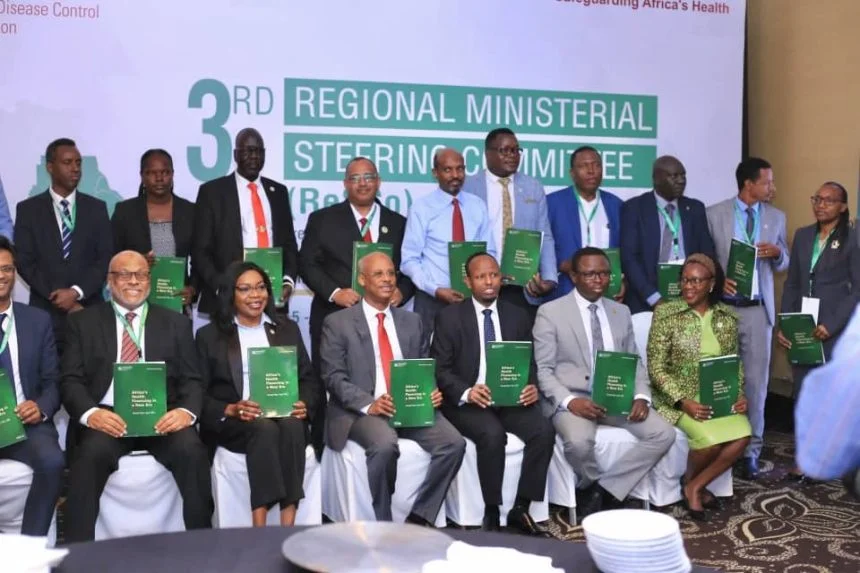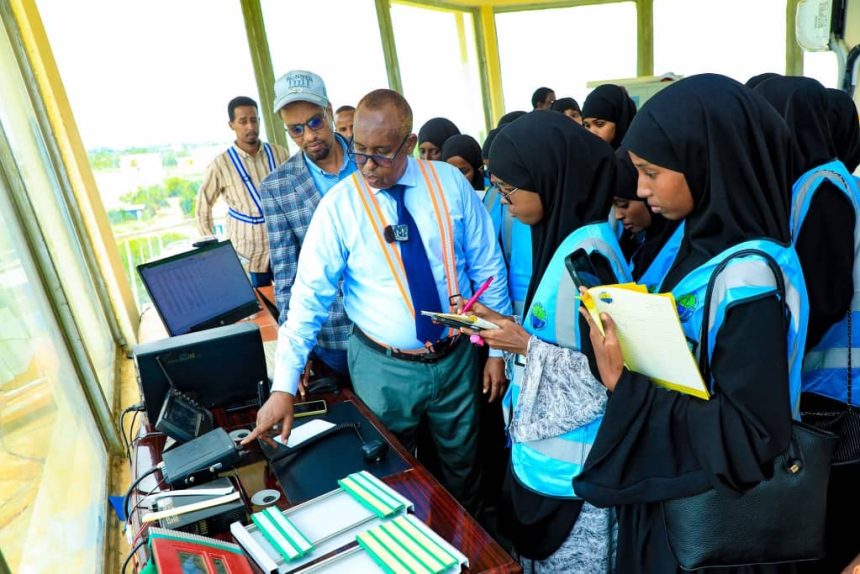Students from the Faculty of Civil Aviation at Mogadishu University recently undertook a field study tour to Shaati Gaduud Airport in Baidoa.
This is part of the university’s commitment to practical, experience-based learning.
Mogadishu University Students Access Key Operational Areas at Shaati Gaduud Airport
Accompanied by faculty members and university officials, the students were welcomed by airport authorities and given exclusive access to key operational areas.
The visit included guided exposure to airport management offices, air traffic control units, and navigation systems, providing students with firsthand insight into real-world aviation practices.
This initiative forms a vital part of the university’s practical training programs designed to bridge the gap between classroom theory and the demands of Somalia’s growing aviation industry.

Academic-industry Partnerships
Officials at Shaati Gaduud Airport praised the collaboration and expressed their willingness to support more such academic-industry partnerships that build local capacity and enhance aviation education.
Mogadishu University reaffirmed its commitment to strengthening professional skills among Somali youth and contributing to the modernization of Somalia’s transportation infrastructure, especially in the civil aviation sector.
Facts About Shaati Gaduud Airport
Location & Strategic Importance
Situated in Baidoa, capital of Somalia’s Southwest State, at approximately 1,505 ft (460 m) above sea level.
It serves as a vital connection for the city’s 1.5 + million residents, especially given the insecure and perilous roads to Mogadishu.
History & Infrastructure
Shaati Gaduud Airport was established in the 1960s, with a major runway extension in 1974—lengthened to 2,940 m with Soviet assistance.
Current facilities include a terminal building, fuel services, apron, air traffic control tower, warehouse, and perimeter fencing.
Rehabilitation & Security Enhancements
From January 2021 to June 2022, the UNSOS upgraded about 2–2.5 km of runway and taxiways, widened them for heavy aircraft like the C-130 Hercules, and rehabilitated asphalt surfaces.
It also installed roughly 6 km of perimeter fencing to deter wildlife intrusions and unauthorized access and built a new airport police station, funded by the Italian government and managed by AMISOM, to bolster safety and law enforcement.

Traffic & Operational Capacity
The airport now handles around 30 flights per week, including 20 commercial flights and multiple humanitarian/UN missions.
Weekly passenger volume has increased from about 1,000 to 1,500–2,000, with expectations for further growth.
Economic & Humanitarian Impact
Upgrades have significantly improved delivery of medical supplies, essential goods, and humanitarian aid, aiding Baidoa’s healthcare and emergency services.
And the enhanced connectivity with Mogadishu promotes economic growth and supports regional stability and integration.
Capacity Building & Partnerships
UNSOS, together with Somali aviation authorities and ATMIS, trained local airport personnel—firefighters, rescue teams, and air traffic controllers—to align with international standards.
Institutional support includes collaboration with AMISOM (Italian-backed police station) and ongoing involvement from federal and regional governments.


